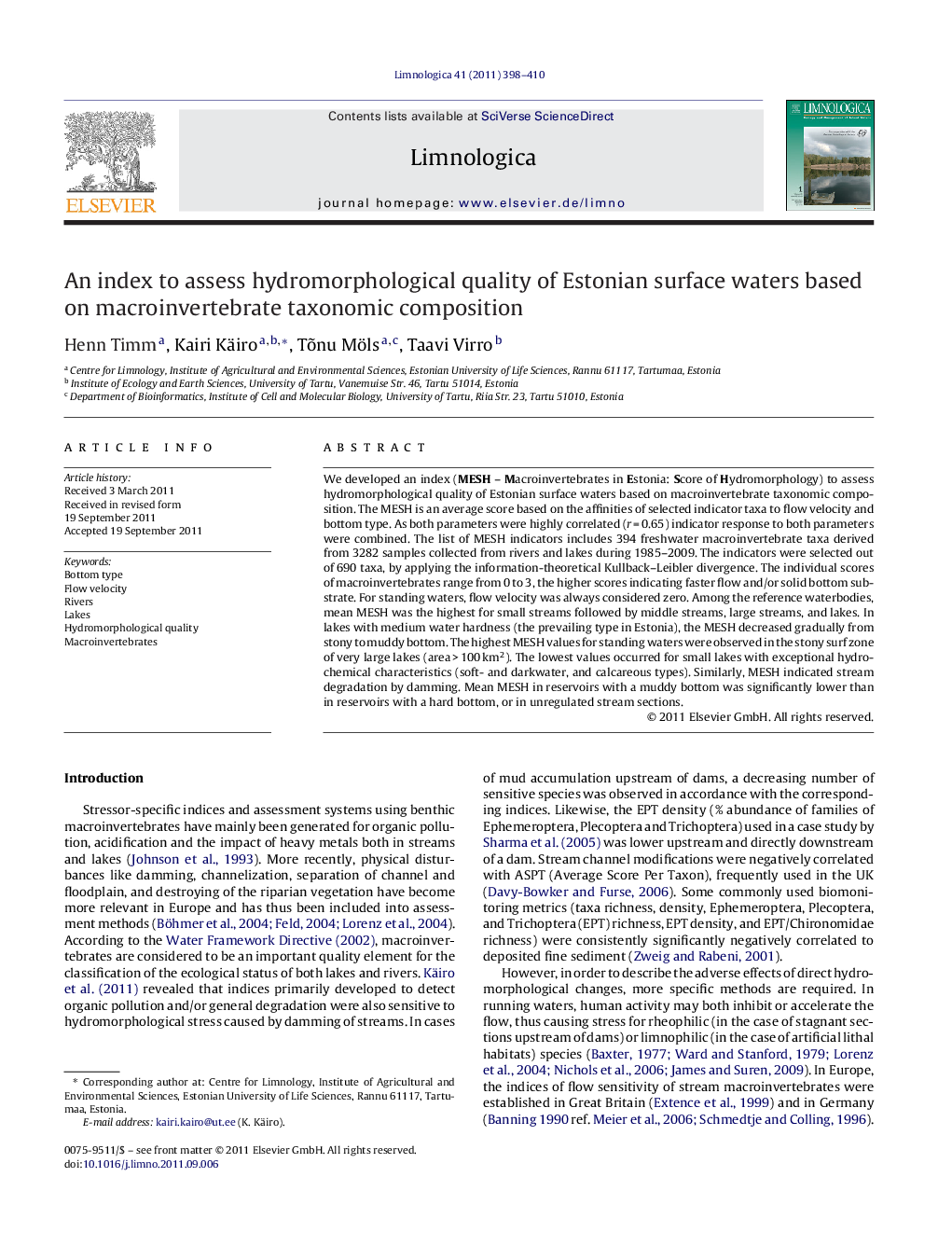| Article ID | Journal | Published Year | Pages | File Type |
|---|---|---|---|---|
| 6305701 | Limnologica - Ecology and Management of Inland Waters | 2011 | 13 Pages |
We developed an index (MESH - Macroinvertebrates in Estonia: Score of Hydromorphology) to assess hydromorphological quality of Estonian surface waters based on macroinvertebrate taxonomic composition. The MESH is an average score based on the affinities of selected indicator taxa to flow velocity and bottom type. As both parameters were highly correlated (r = 0.65) indicator response to both parameters were combined. The list of MESH indicators includes 394 freshwater macroinvertebrate taxa derived from 3282 samples collected from rivers and lakes during 1985-2009. The indicators were selected out of 690 taxa, by applying the information-theoretical Kullback-Leibler divergence. The individual scores of macroinvertebrates range from 0 to 3, the higher scores indicating faster flow and/or solid bottom substrate. For standing waters, flow velocity was always considered zero. Among the reference waterbodies, mean MESH was the highest for small streams followed by middle streams, large streams, and lakes. In lakes with medium water hardness (the prevailing type in Estonia), the MESH decreased gradually from stony to muddy bottom. The highest MESH values for standing waters were observed in the stony surf zone of very large lakes (area > 100 km2). The lowest values occurred for small lakes with exceptional hydrochemical characteristics (soft- and darkwater, and calcareous types). Similarly, MESH indicated stream degradation by damming. Mean MESH in reservoirs with a muddy bottom was significantly lower than in reservoirs with a hard bottom, or in unregulated stream sections.
